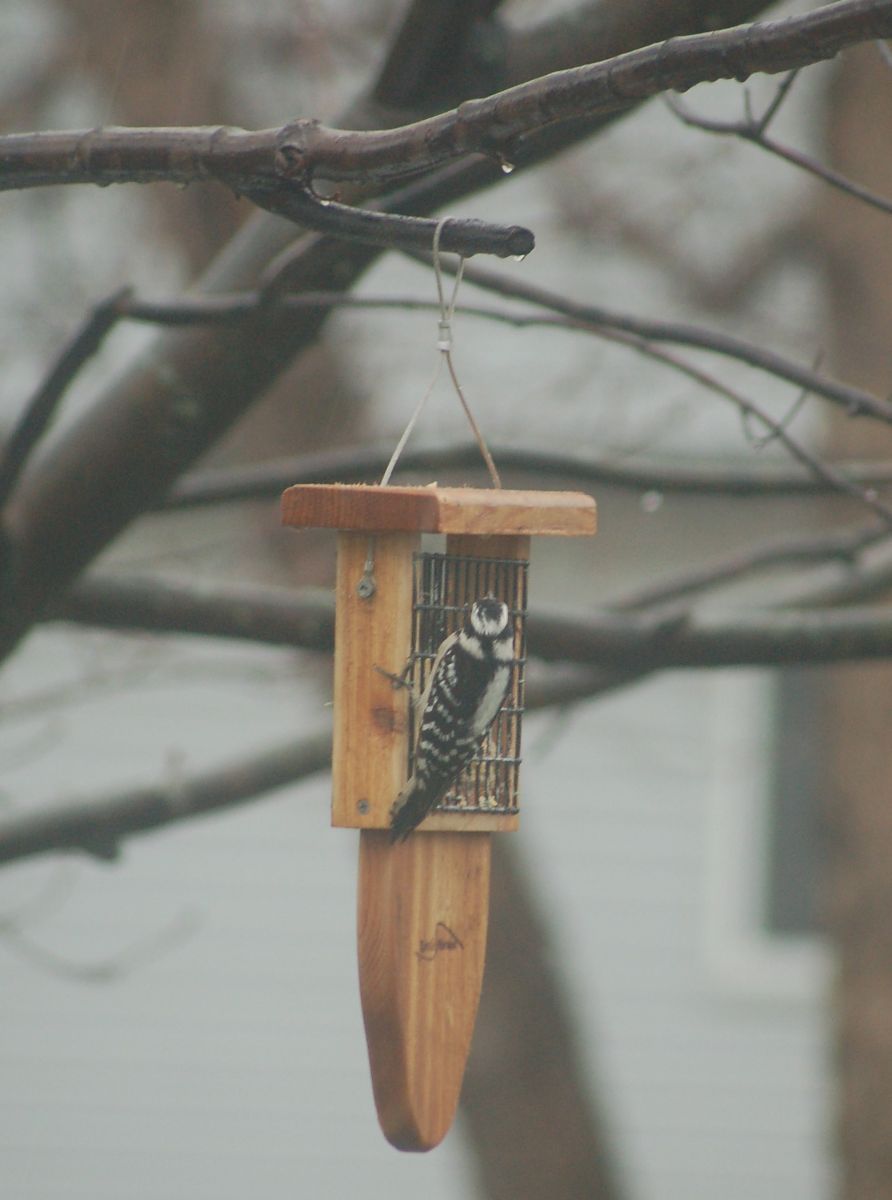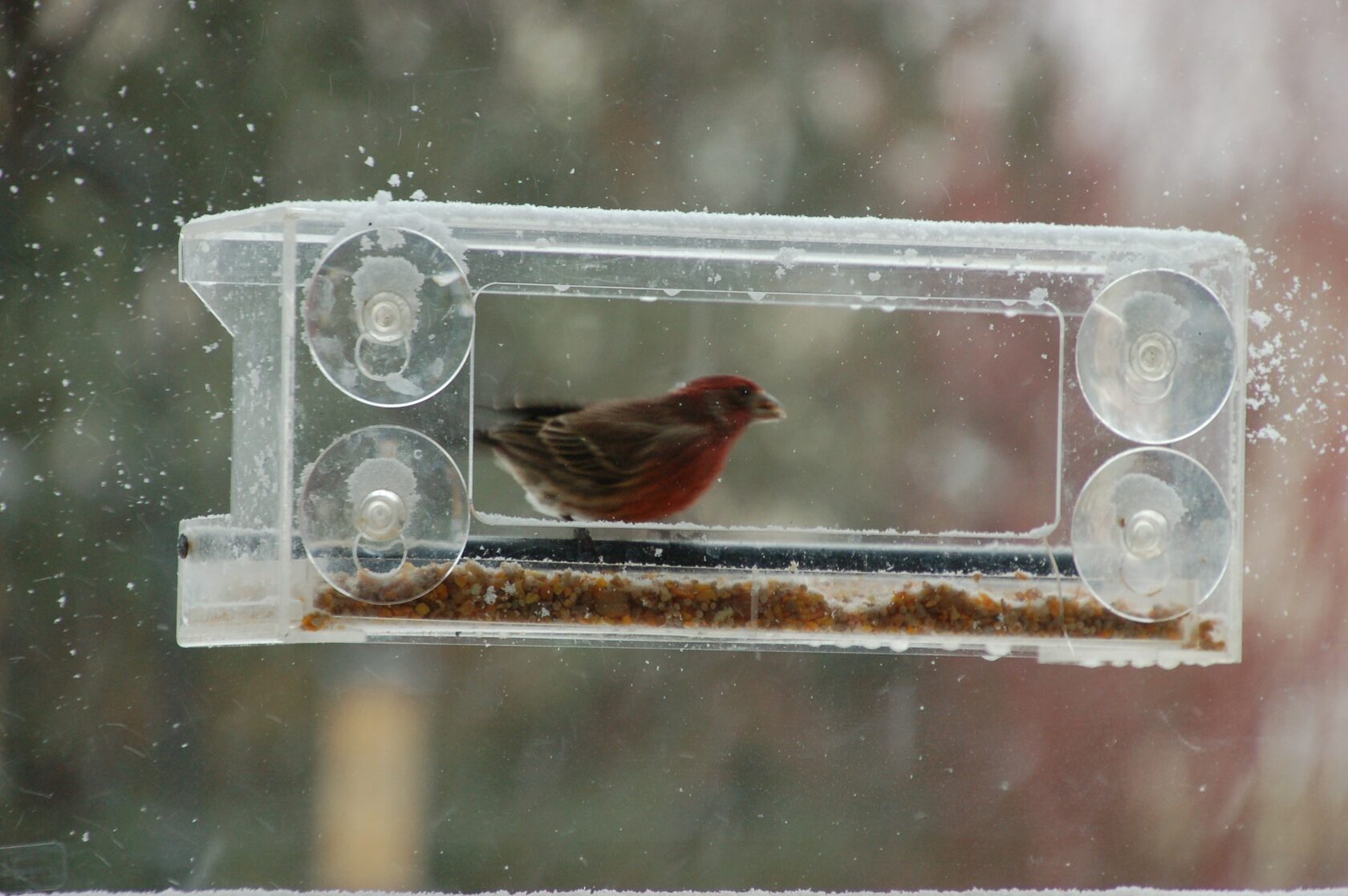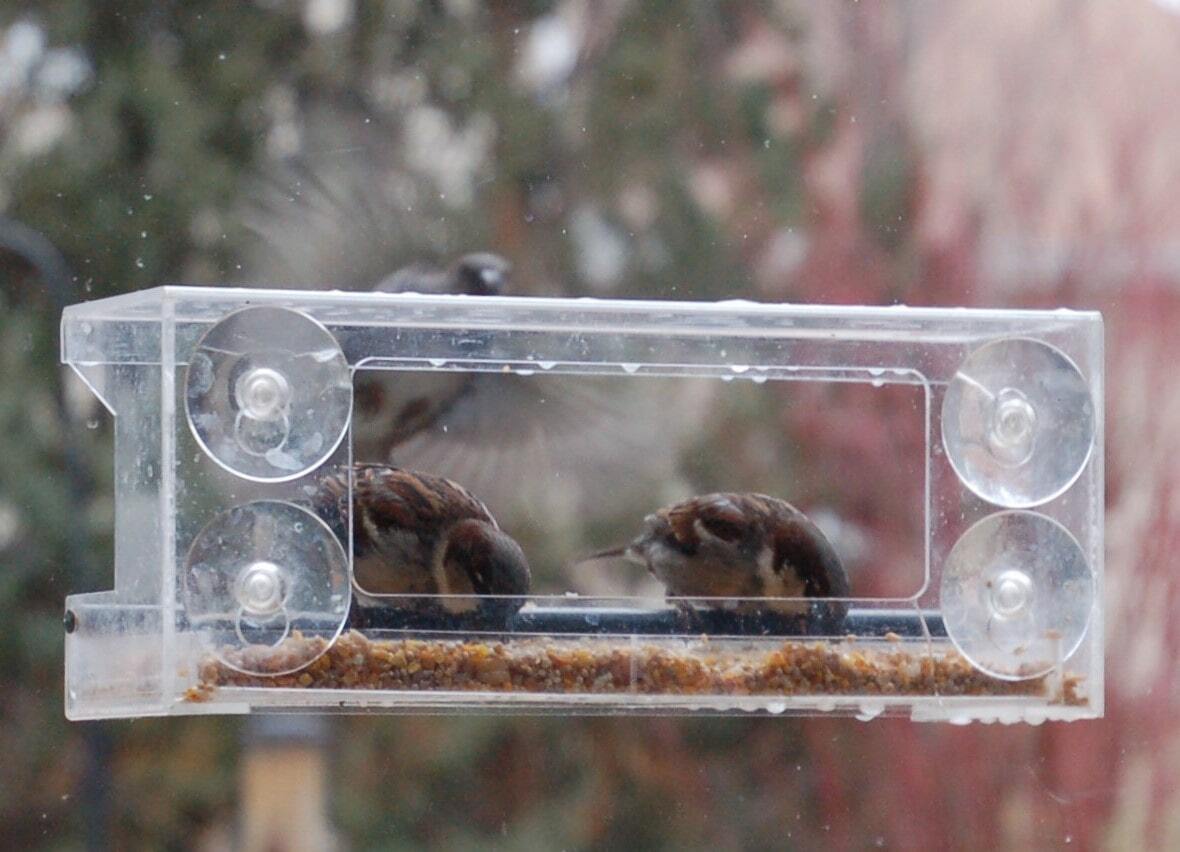Don’t get me wrong: I enjoy watching cardinals, nuthatches, woodpeckers, finches and juncos feasting at our feeders. And it feels good knowing that I’m helping these creatures survive during a time of slim pickings for other food sources. (One exception: the house sparrows that descend on our feeders like a swarm of locusts. I’ve made peace with them; they’ve got to eat too.)

However, I wasn’t so crazy about some of the other aspects of bird feeding. Like squirrels. No matter how ‘bullet-proof’ you try to make your feeders, squirrels will find a way to get to the seed. And, once one squirrel finds your feeder, it seems like the rest of the squirrels on the block come running.
One morning, I looked out the window to find what looked like a squirrel circus, with at least 10 squirrels darting about, chasing each other and gobbling up bird seed. Why bother digging up all those acorns stashed in the fall from our red oak tree when a seed buffet awaits?
Finally- Keeping Squirrels off the Bird Feeders!
Ah, but I finally found a way to quash my bushy-tail ‘friends’ feeder raids. It’s called Cole’s Flaming Squirrel Seed Sauce. The sauce contains habanero chili pepper and soybean oil. Squirrels avoid eating seed covered in this sauce, much like you might put down your fork after tasting an eye-watering Thai dish. Yet the sauce doesn’t bother birds. When using a product like this, wear rubber or vinyl gloves when mixing it with seed; it can irritate your skin.If you want to feed the squirrels too, options include dried corn-on-the-cob, loose dried corn, raw peanuts and peanut butter-covered pinecones or stakes.
Another annoyance of bird feeding is the pile of shells littering the ground around feeders. Granted, that’s a ‘first world’ problem. But I’m all about spending less time cleaning up and disposing of seed hulls. So now I buy America’s Favorite® No-Waste Wild Bird Feed. It’s more expensive—about $20 for a 20 lb. bag vs. $33 For a 40 lb. bag of regular bird seed where I purchase it. But it involves little cleanup.

9 Helpful Tips to Keep Birds Coming Back to Feed
If you’re interested in helping our feathered friends make it through winter’s lean times, here are a few tips:- Locate your feeders near shrubs and trees. Birds like to flit in and out of shrubs and trees--particularly densely branched shrubs and evergreens--to avoid predators.
- Make sure feeders are easy for you to access. There’s nothing more miserable than having to trudge through snow on a bitterly cold day to fill your feeders.
- Keep views from your house in mind. Can you easily see your feeders from your favorite couch or chair? We bring the action up close with a clear feeder that attaches to our family room window.
- Think about different types of foods and feeders for different types of birds. Birds such as cardinals and nuthatches eat a variety of seed types placed in platform and hanging feeders. Hairy and downy woodpeckers visit our suet feeder to feast on fatty suet. And finches peck at a bag of thistle hanging from our maple tree.
- Plant berry producing shrubs. If you don’t like the fuss and muss of feeders, consider shrubs that retain berries during winter. Some options include Aronia arbutifolia ‘Brilliantissima’ (Red Chokeberry), Aronia melanocarpa (Black Chokeberry) Ilex verlicillata ‘Red Sprite’ (Winterberry), Rhus typhina (Staghorn Sumac) and Viburnum trilobum ‘Redwing’ (American Cranberrybush).
- Don’t cut down plants with seed heads in the fall. Natives like Echinacea spp. (Coneflower) Rudbeckia spp. (Black-eyed Susan) Eutrochium spp. (Joe Pye Weed) have seeds heads that provide sustenance for goldfinches, chickadees, towhees and nuthatches. (The designation ‘spp.’ stands for multiple subspecies of a plant.)
- Birds don’t need seed year-round. Given the scarcity of food sources in our urban landscapes, birds need a helping hand from us in the winter. But come spring, they get most of their necessary protein from caterpillars and other insects they munch on through the fall.
- Protein from insects is particularly important to nurture their nestlings. According to entomologist Doug Tallamy, author of “Bringing Nature Home,” 96 percent of North American birds (other than seabirds) feed their young with insects.
- There’s no hard and fast rule for when to start/stop feeding birds. Typically, I put feeders out in November and take them down at the end of March—unless our Chicago area winter lingers.
If you haven’t already, I hope you consider placing a feeder in your yard. And if you already have one or more feeders, consider another type, like a suet feeder for woodpeckers. Or place a feeder in a different location where you can view it—like in front of your home. Then sit back and enjoy the show!
Thanks for stopping by.
(Note: While I’ve provided links to two products above, I am not receiving any renumeration for this.)
